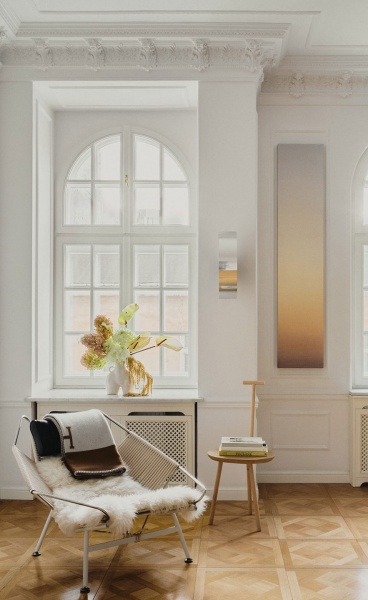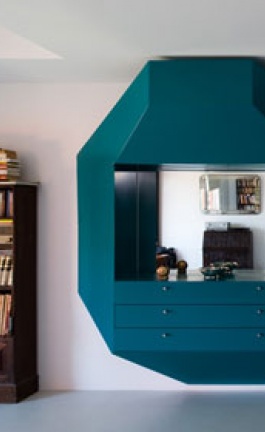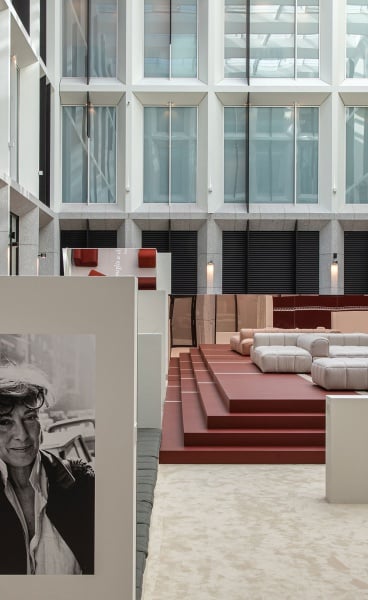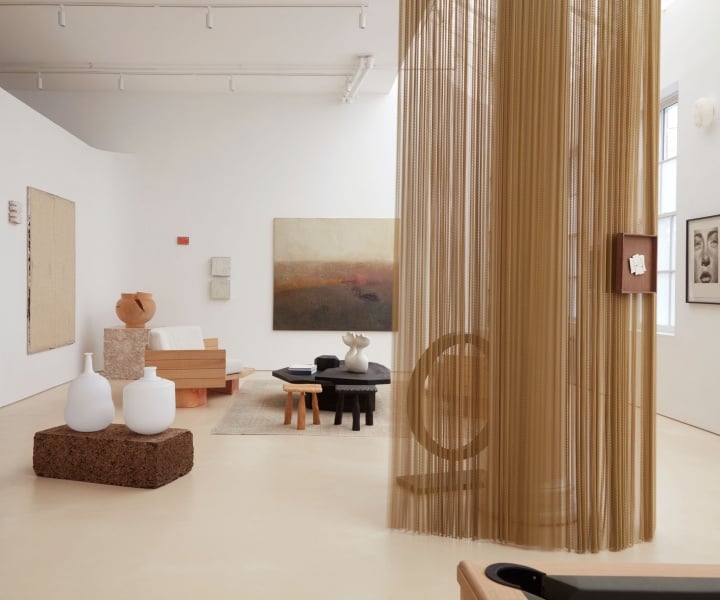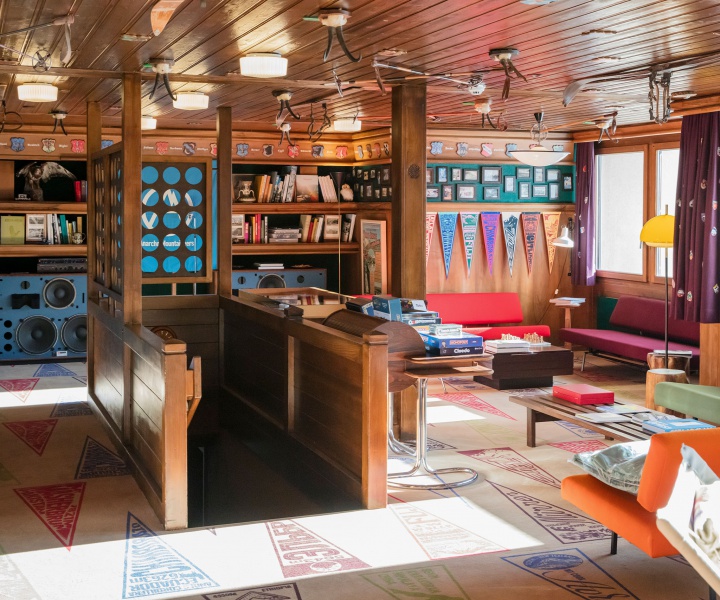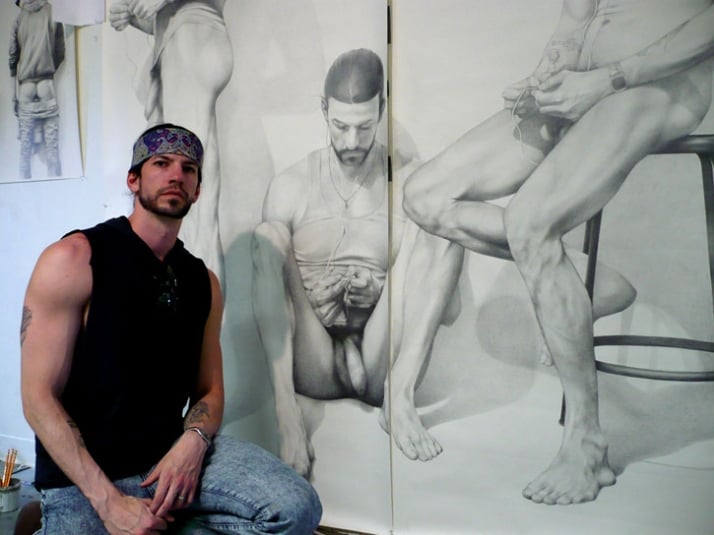
Zachari Logan was born in 1980 in Saskatoon (Canada) where he currently lives and works. He is a 28 year old Canadian artist who paints and draws his own body as the main subject, engaging personal narratives that contradict and question existing notions of masculine representation. As a queer man interested in the vocabulary of realist figurative painting and drawing, his body is the catalyst for his fascination with masculine stereotypic portrayals. Utilizing historic themes of male bravado, heroism and narcissism, he juxtaposes the mundane realities of everyday contemporary life. His narratives are situated within the complex visual language of Neo-classical, Baroque, and Renaissance painting. This specific vocabulary adds both psychological and metaphoric weight to his conceptual process thereby locating his marginalized identity within historical and contemporary archetype.
Zachari Logan talked to Yatzer two weeks before his solo exhibition in Paris on 17th January - 7th February 2009, which will be on view at the JEANROCH DARD GALLERY (13 rue des Arquebusiers, 75003 Paris, France).
Crowd 1 by Zachairi Logan. 2008
Gulliver by Zachari Logan, 2005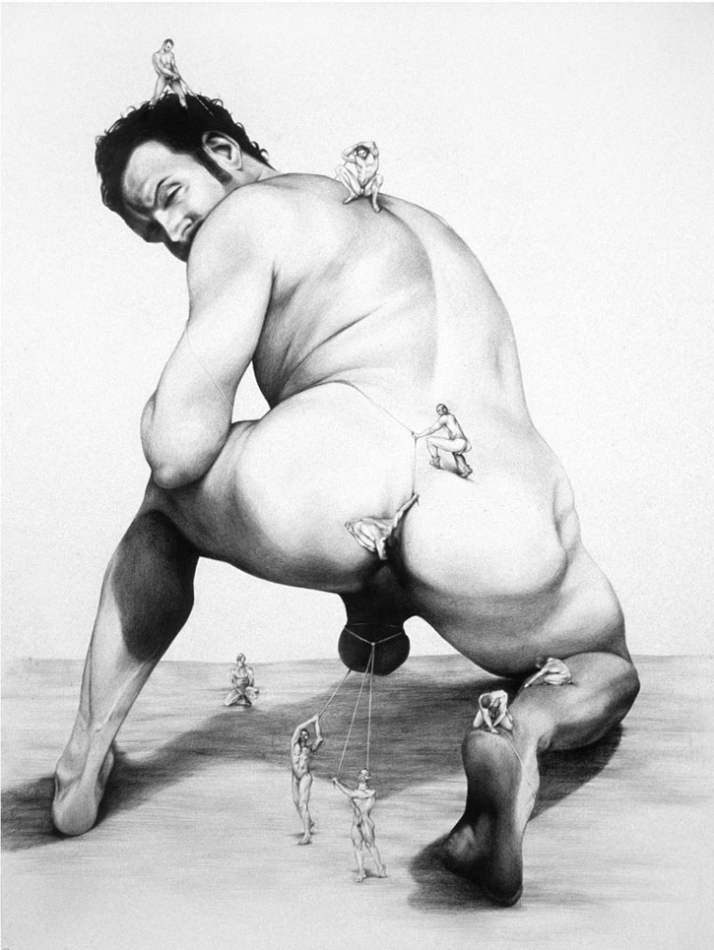
Crowd 2 by Zachari Logan, 2008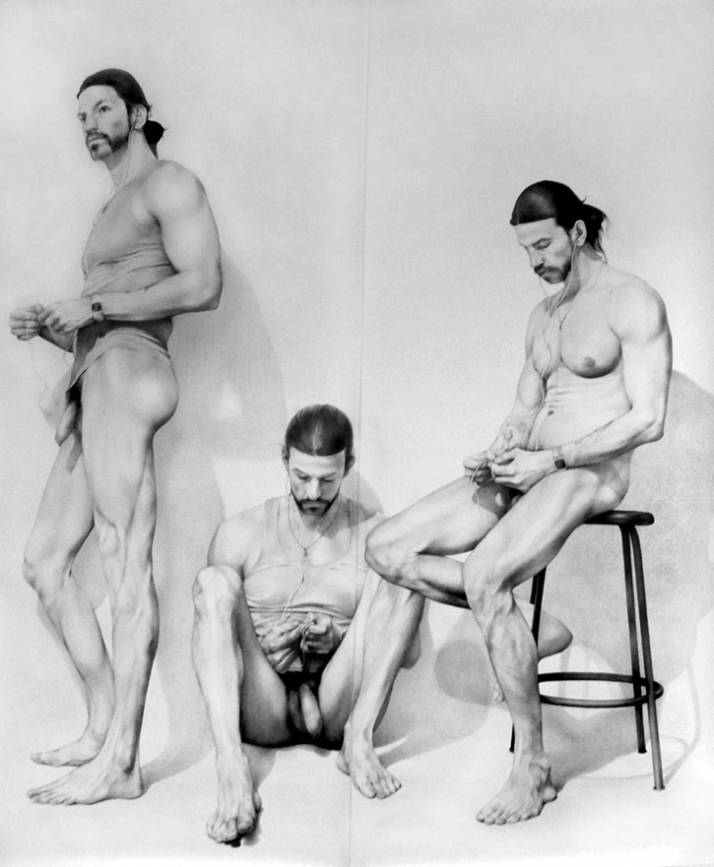
_Yatzer.jpg)
>> My body is a catalyst for my fascination with the stereotypic portrayals of masculinity. The act of weightlifting, attaining a well-sculpted body is envisioned stereotypically as a visual mark of masculine enterprise, an act I partake in on a daily basis. Without needing to see myself engaged in the act itself, my drawn body infers the performance of athleticism. This athleticism, coupled with the theatricality of a doppelganger or triplet, co existing on the same stage is designed to subtly evoke feelings of competition, fear and omnipotence - all in relation to performance anxiety. Although in most of these drawings I depict my body on a life-sized scale, the pictorial space in these drawings is quite shallow, with enough room for the figures to exist and interact. This lack of spatial depth is referential to Neo-Classical space, in which Spartan bodies were used to visually epitomize the strength of the empire. The containment of space in these drawings is structured to illustrate a sense of claustrophobia and is directly referential to the viewer’s own body. This is a space that is in-between or marginal, a visual realm that is too small to exist within comfortably — but is considerable enough to contemplate being in.
In both my graphic work and my painting, I confront the notion that masculinity is homogenous and question hetero normative sexuality as the origin by which all other male sexual realities are judged. Recently my painting has become more literally autobiographical, in the sense that I am exploring my own image as the subject matter. While I am still analyzing constructions of masculinity through the exploration of archetypal male identities, I am performing a sort of drag by impersonating these identities using a semblance of my own image and costuming.
The staged backdrops, which contain these performances which are both minimalistic and border on tableau, further reference the constructed nature of sexuality and identity. While my drawings continue the same types of exploration into masculinity with the use of constructed images and elaborate backdrops, they are more allegorical in nature. Visually, I am interested in Neo-Classical and Baroque spatial realms. In my work, I mimic these styles referencing art-historical masculine portrayals. I then undermine these very constructions by returning the instinctually heterosexist gaze with a self-anxious queer narrative. <<
Zachari Logan
Sebastian (detail) by Zachari Logan, 2008
in the studio with Zachari Logan / photo by Karla Griffin
Describe yourself in five words.
Irreverent, Enjoyable, Intelligent, Sarcastic, Loyal…
What inspires you?
I am inspired by history, aesthetics and a good story with fascinating characters. I am also often inspired by the mundane interactions in everyday life.
What is your belief about narcissism?
All artists are narcissistic in a way, (and I don’t mean this negatively) as we all create work which is about ourselves. Issues which affect us - I use myself as a mirror to engage viewers in a conversation about masculine stereotypes and queerness. The repetitive depiction of myself in my work indicates an innate narcissism on the part of myself, the artist. A person auto-eroticizing his or her own image, seeing in him or herself that which is sexually appealing is an aspect of everyday life that I wanted to reveal in this series. In heterosexist society, the act of gazing at one’s self is stereotypically accepted behavior for women and homosexual men as it is considered to be an effeminate act. This type of conduct is often stereotyped to have serious homoerotic undertones. â¨Auto-eroticization is so ubiquitous, particularly to most men, that they often rebuff doing it. Unapologetically employing the rhetoric of self-satisfaction within my work helps to de-stabilize hetero centric notions of queer relationship dynamics whilst playing nicely into the stereotype that homosexual men and women substitute another person of the same sex in place of their own unattainable selves.
Why have you chosen yourself to be the protagonist of all your paintings?
Your must be full of self-confidence! Who says I’m always the protagonist?!… I am self confident - I think that is apparent, but I hope the themes in my work express more than just a simple case of solipsism on my part.
What made you start painting YOURSELF naked?
For a long time I had been working on paintings and drawings which depicted men compiled from everyday sources such as internet porn, magazines and old photographs. These series were successful in my opinion, but I felt they were lacking a more subtle edge, one which I felt I have acquired through the use of myself as the subject. Using only my own image has aided in the production of a more nuanced visual understanding of masculine portrayals. I have much more control over how I present my own image as opposed to images of men I do not know and have little or no psychological connection to. In developing a body of work that features me as the sole figurative element, I am able to locate myself in relation to my viewer. With this single source, I narrate embodied personal experiences about my life as a gay man, my relationship with my body and how others perceive it.
If you were born in another century which one would it be and why?
I’m not sure I’d want to be alive in a time without modern medicine… but I’d have to say either the 16th century, so I could meet Caravaggio my favourite artist… or the 19th century so I could meet Arthur Rimbaud and Oscar Wilde.
Which of your own paintings are you most proud of?
Most proud of… I’m not sure- but my favourite painting at the moment is “In and Out #1”
in and out 1,2,3 by Zachari Logan, 2008 / photo by Karla Griffin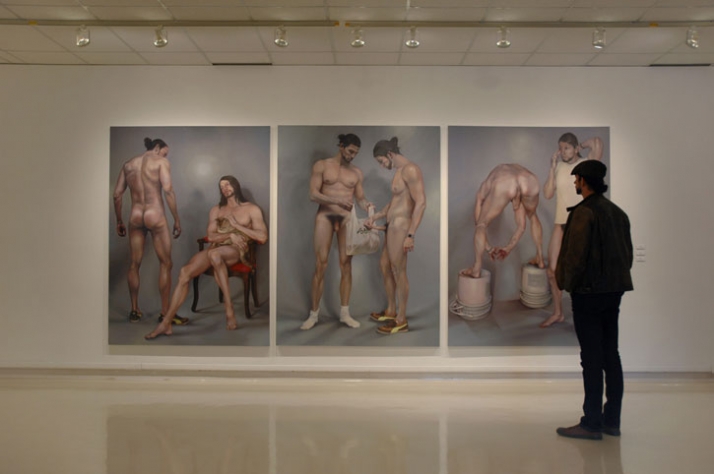
in and out(detail) by Zachari Logan, 2008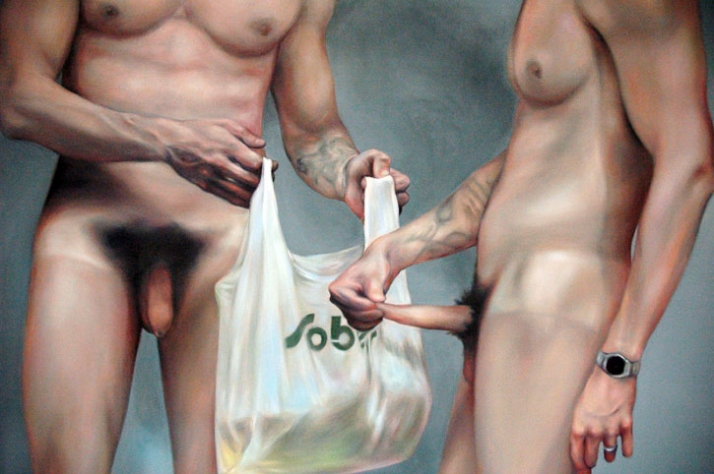
In BUTT magazine’s interview you relate how you are married to a beautiful man called Ned. How does Ned react to seeing his boyfriend naked in your paintings?
I won’t lie as we have certainly had a few long conversations about it- but Ned understands that these works are not about my sexual appetites as this work does not advertise my sexuality in an explicit way. These drawings and paintings are much less about my own preferences - they are about me in the world, about my body… but again not explicitly so.
Are you religious?
More like irreligious… I think religion is an important and significant part of human history and culture - but people who are very religious (or fanatical) often scare me because the way that they think about their prospective religion is usually inane and harmful to others.
You are going for a weekend “somewhere” and you have to invite 8 famous people, dead or alive. Where would you go and who would they be?â¨
Caravaggio, Oscar Wilde, Arthur Rimbaud, Queen Elizabeth I, Elton John, Tori Amos, Anne Boleyn and Virginia Woolf….. somewhere in Lisbon
What’s your favourite movie?
“The Shining” by Stanley Kubrick... hands down!
Are you afraid of the future?â¨
No.
Describe your perfect day?
Reading a good book with coffee, followed by some studio time!
Uniral by Zachari Logan, 2008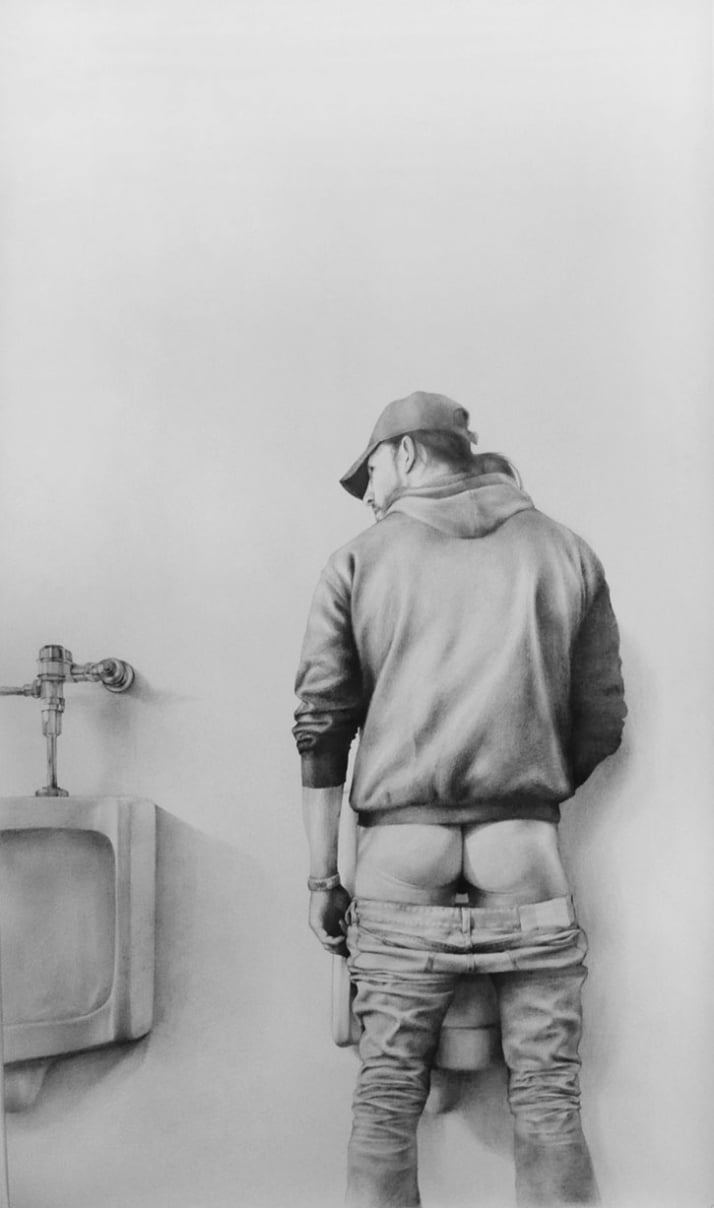
Invincibles by Zachari Logan, 2008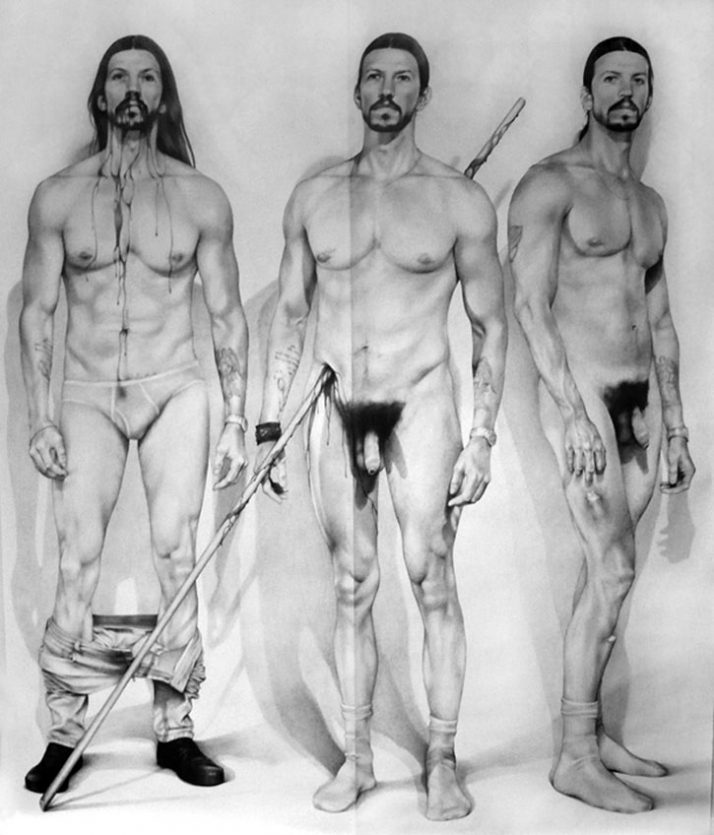
Huskie by Zachari Logan, 2008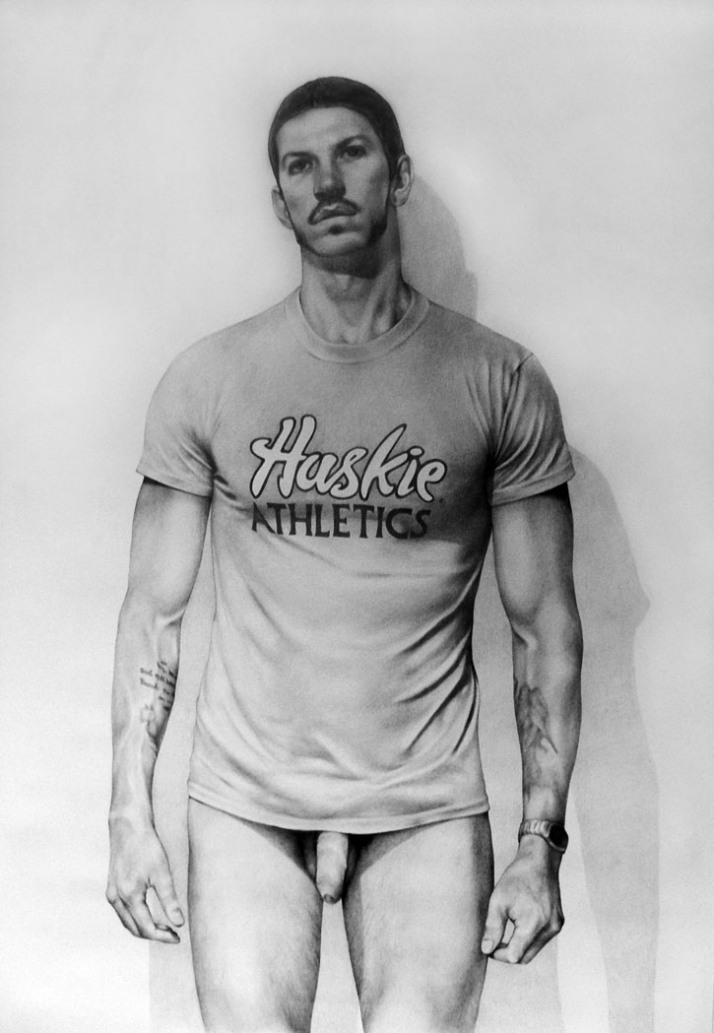
UPCOMING solo EXHIBITION 17 January - 7 February 2009
Zachari Logans's drawings will be on view at JEANROCH DARD GALLERY in PARIS (13 rue des Arquebusiers, 75003 Paris,France)




